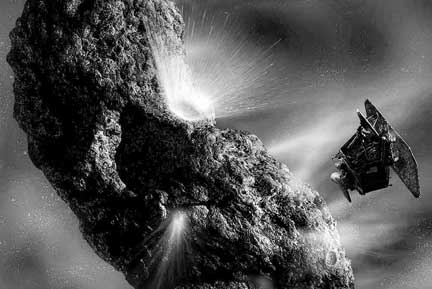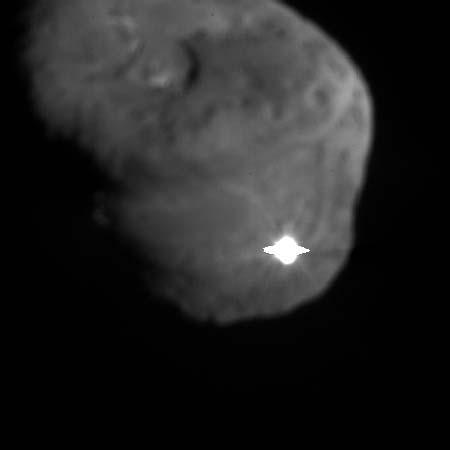The spacecraft that released a probe in 2005 that crashed into the comet Temple-1 is making its way to rendezvous with another comet in 2010. This time just to watch him closely

Last Monday, the Deep Ipemact spacecraft passed by the planet from which it took off for the first time. The near-Earth pass, the first of three planned, provided the small spacecraft (which on the NASA website compares its size to the size of a Volkswagen Beetle model car) acceleration that will help it reach the encounter with comet Hartley-2 in 2010. At the closest point of Deep Impact is About 16 km passed over Australia.
"We send the spacecraft to orbit the Sun several times until the comet arrives," says William Bloom, of NASA's Jet Propulsion Laboratory (JPL) in Pasadena, California.
As you may remember, in 2005, Deep Impact became the first spacecraft to release a smaller spacecraft that was used as a projectile (IMPACTOR) which crashed into comet Temple-1 and provided scientists with their first glimpse of the interior of a comet. The mother ship survived this explosion and was placed in a safe orbit, until it was decided where to send it (because the fuel inside allowed it to arrive, with the help of additional space maneuvers such as the approach to Earth). And the target set is Comet Hartley 2, and the meeting will take place at a distance of about 19 million km from Earth. The spacecraft, which has no more projectiles to release, will hover at an altitude of about a thousand km above the surface of the comet, which is about one km long, and will use the two telescopes and the infrared spectrometer on its surface to map and record gas eruptions from the comet.
En route to the encounter with the comet, the Deep Impact spacecraft will spend six months observing through one of its telescopes to search for Earth-like planets around five nearby stars, around which planets the size of Jupiter and larger have been detected.
The extended mission, named Epoxy, is managed by JPL at a cost of 40 million dollars, this compared to the cost of the original operation of the crash of the bullet on the comet Temple-1 which cost NASA 333 million dollars.

The mission managers asked NASA for permission to change the destination to Hartley 2, a change that involves correcting the route and adding two years to the journey.

3 תגובות
To my father, the editor of the site, sorry for changing the topic for the reminder, the spaceship is supposed to reach the planet Hama in light this year
Read the news on the subject from about a week ago in Bidan. I read again on the NASA website, there is no new date for the flight instead of January 10th.
My father, the editor of the website, read on the NASA website that Atlantis will be launched
In the 10th Binor, why does it suddenly say in Vala that it was rejected, this is the question